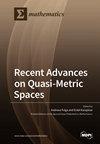解决癌症患者人类免疫缺陷病毒系统问题的新型径向基和西格玛神经网络组合
IF 2.2
3区 数学
Q1 MATHEMATICS
引用次数: 0
摘要
本研究的目的是设计一种基于深度神经网络(DNN)的新流程,以解决癌症患者的动态人类免疫缺陷病毒(HIV-1)感染系统(HIV-1-ISCP)问题。针对非线性 HIV-1-ISCP 的求解,提出了使用 20 和 40 个神经元的径向基和 sigmoid 函数组合的双隐层神经网络结构。模型的数学形式分为三类,分别为癌细胞(T)、健康细胞(H)和感染 HIV 的细胞(I)。通过结果对比,证明了所设计的新方案的有效性。优化是通过适当的共轭梯度程序进行的,通过参考结果可以观察到所提出的数值方法的正确性,绝对误差在 10-3 到 10-4 之间,可以忽略不计。数据库中的数值解决方案是通过 Runge-Kutta 数值方案实现的,并通过使用 72% 的数据进行训练,以及使用 14% 的数据进行测试和验证,进一步降低了均方误差。为了验证这种新程序的可信度,我们利用不同的性能绘制了图表。本文章由计算机程序翻译,如有差异,请以英文原文为准。
A Novel Radial Basis and Sigmoid Neural Network Combination to Solve the Human Immunodeficiency Virus System in Cancer Patients
The purpose of this work is to design a novel process based on the deep neural network (DNN) process to solve the dynamical human immunodeficiency virus (HIV-1) infection system in cancer patients (HIV-1-ISCP). The dual hidden layer neural network structure using the combination of a radial basis and sigmoid function with twenty and forty neurons is presented for the solution of the nonlinear HIV-1-ISCP. The mathematical form of the model is divided into three classes named cancer population cells (T), healthy cells (H), and infected HIV (I) cells. The validity of the designed novel scheme is proven through the comparison of the results. The optimization is performed using a competent scale conjugate gradient procedure, the correctness of the proposed numerical approach is observed through the reference results, and negligible values of the absolute error are around 10−3 to 10−4. The database numerical solutions are achieved from the Runge–Kutta numerical scheme, and are used further to reduce the mean square error by taking 72% of the data for training, while 14% of the data is taken for testing and substantiations. To authenticate the credibility of this novel procedure, graphical plots using different performances are derived.
求助全文
通过发布文献求助,成功后即可免费获取论文全文。
去求助
来源期刊

Mathematics
Mathematics-General Mathematics
CiteScore
4.00
自引率
16.70%
发文量
4032
审稿时长
21.9 days
期刊介绍:
Mathematics (ISSN 2227-7390) is an international, open access journal which provides an advanced forum for studies related to mathematical sciences. It devotes exclusively to the publication of high-quality reviews, regular research papers and short communications in all areas of pure and applied mathematics. Mathematics also publishes timely and thorough survey articles on current trends, new theoretical techniques, novel ideas and new mathematical tools in different branches of mathematics.
 求助内容:
求助内容: 应助结果提醒方式:
应助结果提醒方式:


